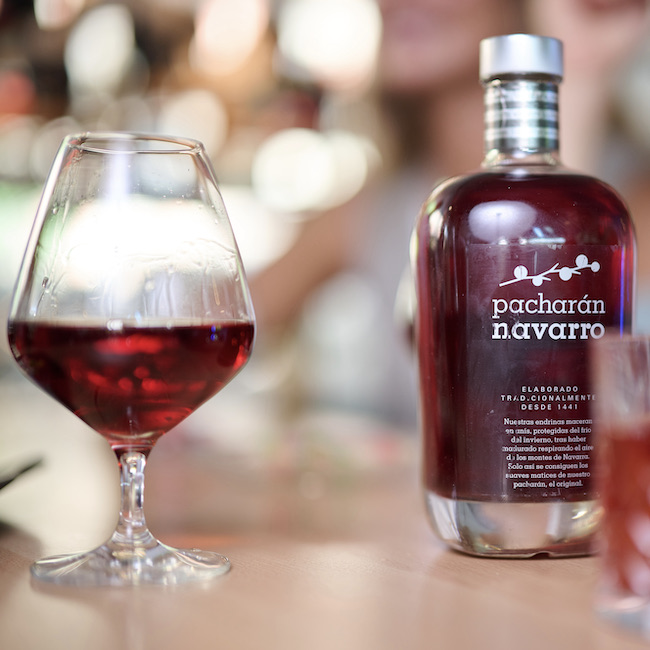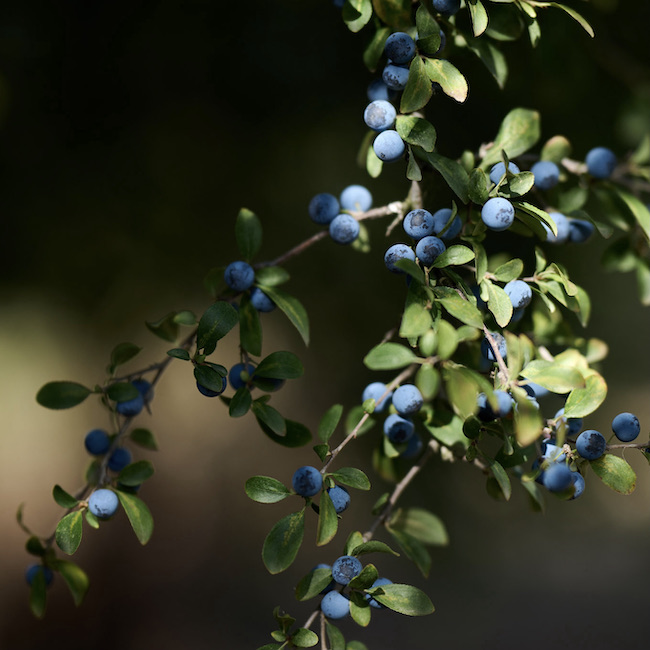.png.transform/rendition-xs/image_image%20(1).png)
It’s Pacharán Time! Sloe Fruit's Charm
This unique red liqueur, originally from Navarre, is perfect for sipping after a meal and it surprises people with its red color, aromatic strength, and mild flavor
Fall in Navarre, a region in northern Spain bordering the Basque Country to the west, has a special color. It's one that we rarely associate with nature: the dark blue of the sloe, the fruit of the blackthorn (Prunus spinosa L), a thorny tree up to four meters tall found on the edges of Navarre's forests.
This uniquely colored fruit is used by Navarre locals to make their most iconic drink: pacharán, an intense reddish liqueur that is very aromatic and has a moderate alcohol content of between 25 and 30 degrees. It was already enjoyed in Navarre more than 500 years ago, but it wasn't until 1989 that the Pacharán Navarro Regulatory Council was created, establishing a series of guidelines to safeguard the quality of this unique drink through a Protected Geographical Indication.
Up until then, the sloe was obtained directly from wild bushes; however, from that moment on, guidelines were set out domesticate the plants so as to create sloe plantations. This led to a big push for the massive commercialization of a product of which 3.5 million liters are produced each year.
In the production of pacharán from Navarre, practically 100% is made from sloes from the region. This is significant because the quality of the raw material is important for producing a high-quality final product. In addition to the sloes, it requires aniseed, to which these fruits add color and astringency. During maceration, the sloes reduce the alcohol content of the aniseed by about four degrees, which provides sweetness, aroma, and alcohol. The key to this process is to balance the strength of the sloe and the sugar from the aniseed.

The variation in the concentration of sloes—the Regulatory Council allows between 125 and 300 grams per liter of finished product— also makes it possible to create different types of pacharán. For example, the Grupo La Navarra has three brands. "La Navarra is an after meal pacharán, to be enjoyed in a glass. For consumers looking for a more intense fruit flavor and less sugar, we have our Etxeko pacharán and, finally, our Belasco pacharán has a higher concentration of sloe and a more gourmand profile," says José Manuel Plo, general manager of the group. There are as many pacharans as there are consumers.
After a meal, the perfect time
As for the best time to drink it, the answer is pretty clear: "Pacharán is a perfect drink for after a meal. Always cold, with or without ice. But it can also be enjoyed in other ways, for example, in mixed drinks. It's typically served in a butanito (which refers to its orange color, similar to that of a butane gas cylinder in Spain), in which it's mixed with orange juice or a soft drink," explains Adrián Subia, president of the GI Pacharán Navarro Regulatory Council and part of DZ Licores (part of Zamora Company), that markets what may be the best known brand of pacharán: Zoco.
Subia believes that cocktails are one of the best ways to attract the younger crowd into the world of pacharán: "It's easy to replace vermouth with pacharán in many recipes," he says. "A simple recipe is a mojito with pacharán. You just have to add ice, mint, and a dash of lime. There's no need to add sugar; pacharán has enough."
"There are no sloe liqueurs at an international level," explains Plo, who notes that pacharán exports are mainly focused on Europe, especially France, Germany, and the Nordic countries. "The United States is also gradually joining the list, especially the East coast," he adds. "There is also fairly widespread general knowledge about this drink in Mexico," Subia says.

However, it's pacharán's unique character that makes it one of those products that does not go unnoticed at fairs and conventions. "One important aspect is the color, because there aren't many red liqueurs. Pacharán is bright, it stands out... It also has a very distinct aroma—it's gentle, and the aniseed isn't especially overbearing. Lastly, everyone who tries it is surprised by it's drinkability; it goes down very easily and has a great permanence in the mouth," says Subia. It's also highly appreciated by pilgrims on the Camino de Santiago who journey across Navarre and taste it for the first time: "It tends to be very popular," Subia adds.
With dessert, in jams, in sauces...
Is pacharán a gastronomic drink? Although it's most commonly enjoyed after a meal, it can be paired with desserts, and not just sweets. "A traditional pairing is with chocolate, although there are many more. As the sloe is also a relative of the almond, pacharán can be consumed with sugared almonds or, for Christmas, with turrón. It's a perfect match," says Subia.
Additionally, pacharán also works as an ingredient in savory recipes. "It can be used for reductions, for example in a sauce made with orange peel and served with smoked salmon, or in jams served with a foie gras mi-cuit."
Anecdotally, Plo mentions the idea that pacharán is traditionally believed to aid in digestion and that, although it has no scientific basis, many people still attribute those properties to it. Subia shares a similar story about pacharán: "On one occasion, a lady told me that, thanks to our drink, a relative of hers was able to enjoy grilled veal, a food he didn't like very much.This person added a dash of pacharán in the pan to create a glaze from the liqueur and the meat's own juices. As a result, he started enjoying his meat. I've tried it and the result is very good, to be honest," Subia says. Pacharán, unique, unlike most others.

